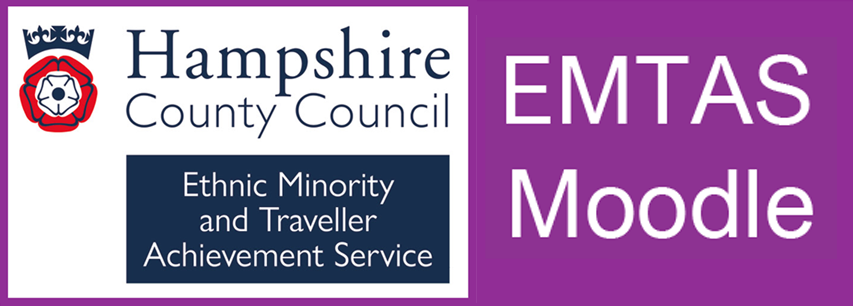Site blog
One question often asked is ‘What are the differences between teaching English as an Additional Language (EAL) and teaching English as a Foreign Language (EFL)? They’re practically the same thing, aren’t they?’ Lynne Chinnery, Hampshire EMTAS Specialist Teacher Advisor on the Isle of Wight clarifies how these approaches to English language learning are distinctively different from each other.

Who are EFL and EAL learners?
English as a Foreign Language (EFL) is used to refer to both adults and children learning English in a non-English speaking country or in the UK for a limited period of time, such as a summer course. English for Speakers of Other Languages (ESOL) mainly refers to adult learners of English in the UK attending English language classes. English as an Additional Language (EAL) is usually used to refer to children who are living and attending school in the UK and whose first language is not English.
Practitioners should remember however that ‘pupils with English as an additional language are not a homogeneous group’ (Naldic, 2012a); their age, background, previous education and previous experience of language learning will all play a part in shaping the way they learn English. Practitioners will therefore need a variety of EAL specific approaches to help each individual along his or her learning path.
What difference does it make?
One of the main differences between EAL and EFL is that because EFL is mostly taught in non-English-speaking countries, EFL students have limited exposure to English. They may have between one and five English lessons a week (the majority from my experience having only one to three lessons) and for many students, this time in the classroom will be the only time that they are immersed in English. They will usually be given English homework and, depending on their level, may even watch English TV programmes or listen to English songs outside the classroom, but on the whole, they will not have extended periods of communication in English, apart from their time inside the classroom.
EAL students, on the other hand, have a completely different experience. Not only are they immersed in English all day, five days a week, both in the classroom and in the playground, but they will also hear English outside school too. Even if they speak their first language at home or use it as a tool for learning, which we highly recommend, they will be listening to English all around them whenever they go out, and will eventually be communicating in the language outside as well as inside school.
One result of this is that EAL learners will normally acquire English much faster than learners of EFL. Even so, learning a language is a long process and EAL learners can take between 7 to 10 years to catch up with their monolingual peers. What is interesting to consider is the way in which they pick up the language. EAL students have time to listen to lots of talk, especially if they are seated with peers who can act as good language models. Being immersed in the language, they will begin to copy what they hear, experiment with it and eventually shape it for themselves. With lots of speaking opportunities in a supportive atmosphere, as well as a teacher and peers to model new language and recast it correctly, their confidence, fluency and accuracy will flourish. EFL students also need many opportunities for practice, but because their exposure to English is more limited, there will be much less time to develop the patterns and rules of language themselves in such a natural way. Because of this, they are likely to need more explicit instruction of grammar and syntax than the EAL student.
Another difference to bear in mind between EFL and EAL, is the fact that the EAL learner is usually alone or in a minority language group within the classroom, while EFL learners often share the same first language. This can make the initial stages of learning much more stressful for the EAL student. Sometimes early stage EAL learners also experience what is known as the ‘silent period’, where the learner begins to absorb the language around them but is not yet ready to speak. Although an EFL student may suffer some anxiety before their first lesson or two, this is not usually so pronounced or prolonged. Imagine how different it would feel if you were learning French in a class of English speaking peers at the same level as yourself compared with learning French in a class of French native-speakers!
EAL learners also differ from their EFL peers as, while they are learning English, they are also learning the school curriculum - in English, which means they have the difficult task of trying to learn English, access the curriculum and catch up with their peers – all at the same time! For this reason, focussing on vocabulary lists that have little or no connection with the curriculum, such as colours, pets or vegetables, is not good practice.
Are there any similarities?
While we are considering the differences between EAL and EFL learners, it is also important to remember that there are many similarities between the two disciplines and that what is good practice in one field can also be good practice in the other. Many methods that are recommended when working with EAL students are also used with EFL learners, such as the use of visuals, role play, paired activities and collaborative group tasks. In fact, these methods work well for all students, not just those learning EAL. In any English language classroom, the form and function of language will still need to be explored but the way language is taught has changed, even in the field of EFL. For example, endless exercises practising one particular grammatical structure, without context or the opportunity to experiment with it in natural conversation, will be of as little benefit to the EFL student as it is to the EAL student. Talk is creative: it is spontaneous and unpredictable and teachers should therefore not only plan activities which enable the student to apply the language they have learnt, but also to use it in real conversations in order for them to grow into independent learners (Naldic, 2012b).
The world of EFL has recognised this shift in methodology and most EFL course books now reflect modern approaches to language learning. We have torn out the language labs and have introduced many more opportunities for spontaneous conversation, that provide a platform to practise the structures and vocabulary taught, rather than an overreliance on drilled exercises with no avenues for real expressiveness. In this way EFL has become more in line with the pedagogy of EAL, where ‘The active use of language provides opportunities for learners to be more conscious of their language use, and to process language at a deeper level. It also brings home to both learner and teacher those aspects of language which will require additional attention’ (Naldic, 2012b).
Accessing the curriculum
EAL and EFL students will have very different experiences on their language journeys, not only because of the differing amounts of exposure to English, but also because of the purposes for which they are learning the language; EFL learners are learning English as a discrete subject whereas EAL learners are learning the curriculum through the medium of English. The good news is there are many useful strategies which work well for both EFL and EAL students, and have been proven to be good practice for all children, including native-speakers. However, practitioners working in the mainstream setting should remember that the curriculum provides the context for English language learning and therefore EAL strategies should be planned into lessons to support pupils’ access to the language demands of the curriculum. Check out Hampshire EMTAS and the Bell Foundation for more ideas.
References
Naldic (January 2012a) Pupils learning EAL [online] https://www.naldic.org.uk/eal-teaching-and-learning/outline-guidance/pupils/ (accessed 09.05.2018)
Naldic (January 2012b) The Distinctiveness of EAL Pedagogy [online] https://www.naldic.org.uk/eal-teaching-and-learning/outline-guidance/pedagogy/ (accessed 09.05.2018)
